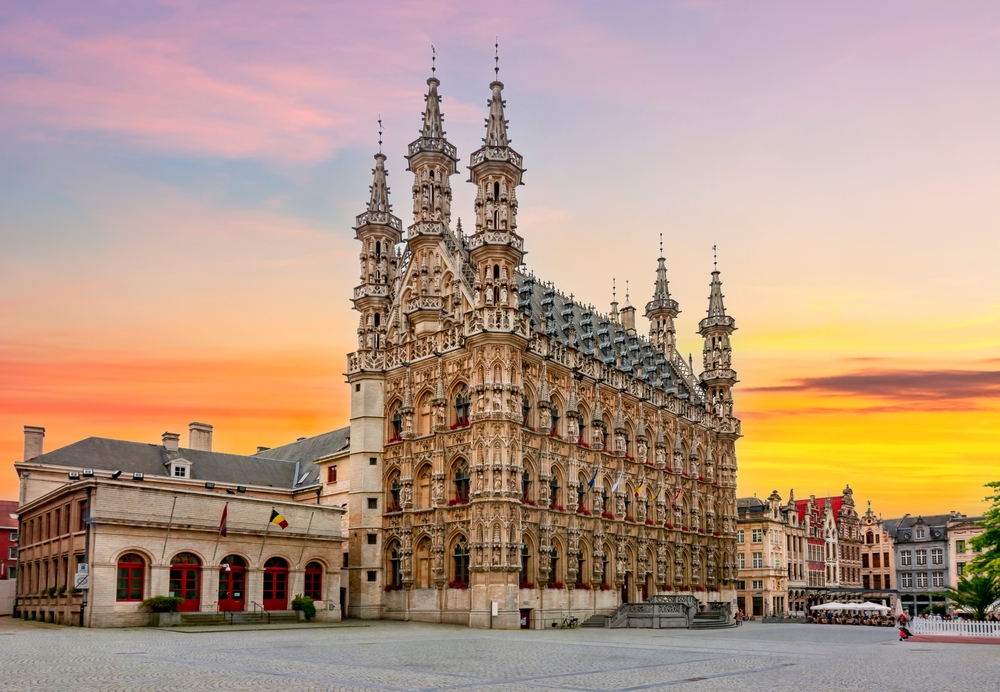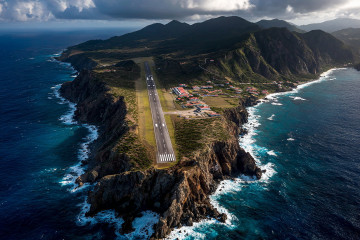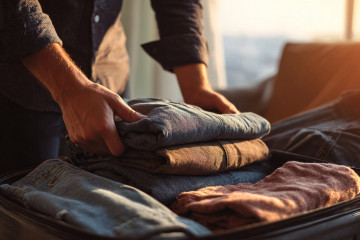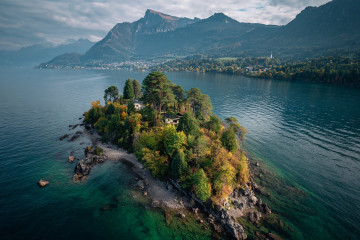Belgium is a beautiful country characterised by its historic town centres, abundance of sumptuous castles, and fantastic foodie scene. Though often overlooked in favour of more popular destinations on a European sojourn, Belgium is well worth a visit during your next European getaway. Here’s your ultimate guide to the best Belgium travel tips you should note down and remember before your next trip to the tiny country!
Belgium is historically divided into two regions, each of which have their own culture and language. Wallonia lies to the South of the country where the local language spoken is French.
This part of the country is known for its medieval towns and Trappist beers. The capital city of Wallonia is Namur, which has been capital of the Walloon region since 1986.
The Northern part of Belgium, and that which borders with the Netherlands speaks Flemish, which is a dialect of Dutch (a language which is also spoken in the Netherlands).
The Flemish region of Belgium is known as Flanders, and this area is famous for its diamond trade (namely via the city of Antwerp) and for being home to the canal cities of Bruges and Ghent.
#1 There’s more to Belgium than Brussels
Brussels is the capital city of Belgium and is considered to be its own region, separate from both Flanders and Wallonia.
Though predominantly French speaking, you’ll find plenty of Flemish speakers too. If you have time to spare, be sure to explore the country outside of Brussels.
#2 Ghent is a great alternative to Bruges
While many flock to the UNESCO world heritage canals of Bruges due to their sheer beauty, there’s another city which is also home to beautiful canals, brick houses, and historic pubs.
Ghent is the hidden gem of Wallonia and boasts the likes of historical brick canal houses, plenty of beer bars, and many a hidden gem you won’t want to miss out on during your Europe trip.
#3 Be sure to try some beer
If there’s one thing that Belgium is known for, it’s the beer. In fact, there are over 3000 varieties of Belgian beer and the country boasts over 200 breweries. Some of the more unique and historical varieties of beer to originate from Belgium are those of Trappist beers, which are brewed in a traditional method which was created by monks many centuries ago.
When sampling the beers, be wary of the alcohol content. Belgian beers tend to be quite heavy and are often as high as 9 or 10% in alcohol percentage, which is quite different from beers in other regions of Europe which tend to be between 4 and 6% in alcohol percentage.
#4 Pack a rain jacket
No matter what time of the year you visit, rain is always a distinct possibility. Though it’s much less likely to rain during the summer months, light showers are always a possibility and so be sure to pack a light rain jacket like this one to help keep you dry!
#5 When is the best time to visit Belgium?
If you’ve stumbled on this post thanks to wondering « what is the best time to visit Belgium? », then you’ve come to the right place. Like many destinations in Europe, the high season for travel is during the summer months (particularly during school holidays) while the low season for travel is in the winter.
Though this means that, with the exception of Christmas market season and the period leading up to New Year’s Eve, hotels and other travel costs are generally cheapest during the winter months, the weather is also at its worst.
As a result, I suggest that the best time to visit Belgium is in the shoulder seasons, i.e. during the spring and autumn when the weather is okay but the crowds are fewer.
#6 Belgium is very bike friendly
Much like lots of countries in Europe (including the neighbouring country of the Netherlands), Belgium is incredibly bike friendly, and this is particularly true of the Flemish part of the country.
Getting around by bike is a fast and efficient way to see more of the city and sights in one go and bike rentals can easily be found in most major cities and towns.
#7 It’s incredibly easy to get around Belgium
As a tiny country, travel around Belgium couldn’t be easier. Indeed, from pretty much anywhere you decide to stay in Belgium you can expect to be able to easily take day trips to other towns and cities in the country.
Of all the Belgium travel tips I could give you, it would be as to just how reliable the public transport in Belgium is. Buses, trains, and trams operate across the country and are incredibly affordable, and so if you want to visit the main attractions that the country has to offer, a car won’t be necessary.
#8 English should be okay to get around
Even though it’s always polite to learn a few words of the local language Flemish, a dialect of Dutch) in Flanders and French in Wallonia, you’ll likely get by with English, particularly in the more touristed areas of the country.
#9 There are different types of waffle
Asides from fries, chocolate, and beer, one of the most famous foods which is often associated with Belgium is that of waffles. With this being said, you should note that there are different types of waffles.
Whereas the Liege style is created from a thick dough containing sugar chunks, the Brussels waffle is the more uniform rectangular one which you’ll find more commonly outside of Belgium.
#10 Tap water is often not free in restaurants and eateries
Unlike in the neighbouring country of France, it’s worth noting that the possibility of ordering tap water to accompany your meal is often not available. Instead, if you’re thirsty, you’ll be expected to fork out some extra cash for a drink.
Don’t be surprised if you’re expected to purchase a bottle of water if you want still water. During my time in Belgium, I only found a handful of restaurants who gave out glasses of tap water for free to accompany the meal I had ordered.
#11 Don’t confuse the train stations in Brussels
One Belgium mistake that you should be sure to avoid is getting the train stations confused, which is surprisingly easy to do. Brussels has three main train stations; Bruxelles-Nord (Brussel-Noord), Bruxelles-Central (Brussel-Centraal), and Brussels-Midi.
In a rather confusing turn of events, Brussels Central is the central station in the city, whereas Bruxelles-Midi (Brussel-Zuid) is actually the southernmost station in Brussels.
Bruxelles-Midi is the station you are most likely to use if you’re travelling internationally as this is where Eurostar departures and Thalys train departures take place.
#12 Cash is (often king)
If there’s one thing you should know before travelling through both Germany and Belgium, it’s that you should have cash on you. Smaller transactions (under €5 or €10) almost always cannot be paid by card, especially if you’re at a smaller independent place rather than frequenting a well known chain.
During a recent trip to Belgium in 2021, I even discovered that there were a number of bars where you couldn’t pay by card at all and any amount spent at the bar would have had to have been paid in cash. ATMs can be found in all of the major cities in Belgium and so be sure to have a little cash on you at all times.
#13 Don’t rent a car in Brussels
If you’re planning a trip to Brussels, then be sure to not rent a car (unless it’s to take day trips from the city). Public transport in Brussels is generally safe (be mindful of pickpockets), convenient, efficient, and very affordable.
Lots of Brussels (and in particular the touristic parts) can easily be explored on foot, and to get to further away parts of the city you can get a bus, tram, or the underground. Renting a car will only incur costs, be expensive to park, and is generally not a good idea for getting around the city.
#14 Brussels is home to one of the best Christmas Markets in Europe
While Germany and the Alsace region of France may be world-famous for their annual Christmas markets, several other places in Europe host markets not to be missed, including several towns and cities in Belgium.
One of the best markets in the Christmas Markets in Brussels, which boasts over 250 stalls, a number of festive events (including a giant ferris wheel and ice skating), and is an all-round veritable winter wonderland thanks to its numerous illuminations and light shows.



